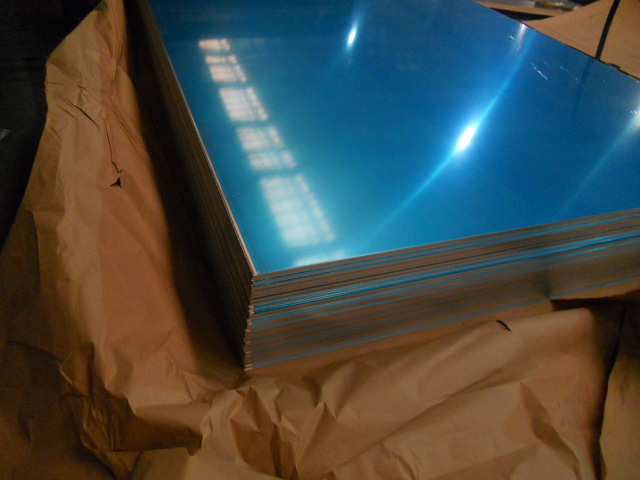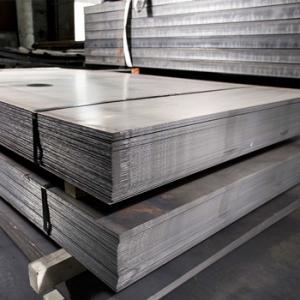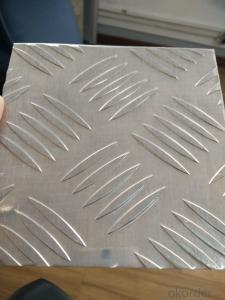Sell Aluminum Sheets for Sale - Wholesalers and Materials & Equipment Aluminium Sheet Products
- Loading Port:
- China main port
- Payment Terms:
- TT or LC
- Min Order Qty:
- 3000 m.t.
- Supply Capability:
- 3 m.t./month
OKorder Service Pledge
OKorder Financial Service
You Might Also Like
Alloy & Size:
1. alloy number 1050 1060 1070 1100 1200 3003 3004 5052 8011.
2. temper available O H14 H16 H18 H22 H24.
3. thickness: 0.2- 100mm.(+/-0.02mm)
4. Width: 30-1700mm.(+/-0.5mm)
Packaging & DeliveryPackaging Detail:
1.aluminium sheet is packed in seaworthy pallet.
2.aluminium weights about two tons per pallet. W1000mm x L2000mm,
3.Size: W 1220mm x L2440mm or customer.
4.Loading: 20-22tons/20 FCL.
Delivery Detail: 20 working days
Specifications:
1.flat mill finished surface.
2.without oxidation and scratch.
3.high quaity and the best service.

Supply aluminum material five major areas of production surplus - supply aluminum material ceramic aluminum plate punching aluminum ceiling net carved Zhuang aluminum plate shaped tile corrugated plate materials products in five major areas of production capacity surplus analysis "from the beginning of 1 million tons, up to now 8 million tons, still says excess capacity, Deputy Secretary General of the China Iron and steel industry association long when subjected to" invest in China "interview said. Recently, China Steel Association released was China's steel production capacity had reached the 8 million tons, but the practice compliance of iron and steel production as long as 4 million tons, still 4 million tons production capacity not by the national approval.
Since 1999 was put on the excess capacity of the hat, the steel industry production capacity will continue to increase as demand continues to expand. On the basis of demand forecasting, the state of the steel industry capacity expansion continues to develop planning, however, due to the need to break the planning of production capacity, and thus the market's production capacity has repeatedly broken the national planning. As in 2009 the first state of the State Council, iron and steel property adjustment and ZTE planning in the prediction of China's crude steel consumption was 4.3 tons, but the actual consumption of 5.7 tons in the past. CISA estimation of crude steel consumption will reach 6.8 million tons, and was approved by the state to the iron and steel production capacity as long as 4 million tons, market is still 4 million tons of production capacity of violations will compensate for the demand gap.
Reality, aluminum material in nearly 10 years of government micro regulation, Chinese iron and steel, cement, nonferrous metals and other industries was defined as "excess capacity" industry, and is suitable for relatively serious land, taxation, project approval, and all kinds of property policy.

- Q: How do aluminum sheets perform in terms of fire resistance?
- Aluminum sheets have excellent fire resistance properties. Due to their high melting point, they can withstand extreme heat and do not contribute to the spread of fire. Additionally, aluminum forms a protective oxide layer when exposed to fire, which further enhances its fire resistance capabilities.
- Q: Can aluminum sheets be used for decorative or architectural purposes?
- Aluminum sheets have multiple uses in decoration and architecture. This versatile material can be easily shaped and molded into various forms, making it perfect for a wide range of architectural projects. It is commonly utilized in exterior cladding, roofing, window frames, and facades, lending a sleek and contemporary appearance to buildings. Moreover, aluminum sheets are also employed for decorative purposes like wall panels, art installations, signage, and furniture. Architects and designers often choose aluminum due to its lightweight and durable properties, enabling them to create visually appealing and functional structures. Additionally, aluminum's resistance to corrosion makes it suitable for both indoor and outdoor applications.
- Q: Can aluminum sheets be easily shaped or bent?
- Indeed, aluminum sheets possess a remarkable capability to be effortlessly molded or flexed. Renowned for its exceptional malleability and ductility, aluminum exhibits a remarkable propensity to be readily fashioned into diverse contours and curves. The manipulation of this versatile metal can be accomplished through an assortment of techniques, encompassing rolling, pressing, and even manual utilization of tools. Given its pliability, aluminum emerges as the preferred choice within industries such as automotive, aerospace, and construction, wherein the fabrication of intricate shapes and bends is a common necessity. Moreover, the lightweight nature and inherent resistance to corrosion further enhance aluminum's suitability for shaping and bending endeavors.
- Q: there is a magnet for other type of nails except aluminum nails
- Aluminum can't be magnetized - it's not ferrous. Put a piece of old pantyhose over the hose of a vacuum and vacuum the area... the nails will be picked up by the suction, but not sucked into the hose. Then you can just tale them off.
- Q: Can aluminum sheets be used for sound insulation?
- Aluminum sheets possess a certain degree of effectiveness in sound insulation. Although aluminum is not as proficient in soundproofing as materials such as rubber or foam, it can still offer a certain level of sound insulation if utilized appropriately. One can employ aluminum sheets as a barrier or partition in walls, ceilings, floors, or other surfaces to decrease the transmission of sound waves. Nevertheless, it is noteworthy to mention that attaining optimal outcomes might require the inclusion of supplementary soundproofing materials or techniques.
- Q: im wondering what happens if you MIG weld aluminum with the correct wire but without using a shielding gas? Would it just be extremely messy or does there HAVE to be an inert gas flowing for it to bond?thanks
- In the presence or air, the aluminum oxidizes so fast that making a bond becomes extremely difficult. The shielding gas prevents oxidation by excluding oxygen. The gas doesn't enter into the process, it just inhibits oxidation.
- Q: Is it possible to use aluminum sheets for constructing car bodywork?
- <p>Yes, aluminum sheets can be used for car bodywork. They are known for their lightweight, corrosion resistance, and high strength-to-weight ratio, which makes them an ideal material for automotive applications. Aluminum is also recyclable and can contribute to the fuel efficiency of vehicles. It is commonly used in the manufacturing of car bodies, particularly in high-end and electric vehicles, for its durability and energy efficiency.</p>
- Q: Are aluminum sheets suitable for insulation purposes?
- Indeed, aluminum sheets prove to be well-suited for insulation endeavors. Aluminum, being a notably reflective substance, possesses the ability to effectively impede the transmission of heat, rendering it a superb selection for insulation purposes. With its low emissivity value, aluminum reflects heat radiation rather than absorbing it, thereby aiding in the preservation of a uniform temperature within a given area and diminishing the necessity for heating or cooling. Moreover, aluminum sheets are characterized by their lightweight nature, straightforward installation process, and resistance to moisture, making them an eminently practical choice for insulation in a plethora of applications, including attics, walls, floors, and HVAC systems.
- Q: Explain how the use of aluminum sheets can impact the visual appeal of a building.
- <p>Aluminum sheets can significantly enhance the aesthetic appearance of a building due to their versatility, durability, and modern look. They offer a sleek and contemporary design, available in various colors, finishes, and textures, allowing architects to create unique and visually striking facades. Their resistance to corrosion and weathering ensures that the building maintains its appearance over time, while their lightweight nature can contribute to innovative architectural designs. Additionally, aluminum sheets can be easily shaped and cut, enabling complex and intricate designs that add to the visual appeal of the structure.</p>
- Q: Can aluminum sheets be etched or engraved?
- Indeed, it is possible to etch or engrave aluminum sheets. The process entails removing a portion of the material from the surface by utilizing acid or a laser with substantial power. This technique allows for the creation of detailed designs, patterns, or even textual elements on the aluminum sheet. The applications for etching or engraving are diverse, including signage, decorative items, and industrial components. To achieve the desired appearance, color or other finishes can be added to further enhance the resulting design on the aluminum sheet.
Send your message to us
Sell Aluminum Sheets for Sale - Wholesalers and Materials & Equipment Aluminium Sheet Products
- Loading Port:
- China main port
- Payment Terms:
- TT or LC
- Min Order Qty:
- 3000 m.t.
- Supply Capability:
- 3 m.t./month
OKorder Service Pledge
OKorder Financial Service
Similar products
Hot products
Hot Searches
Related keywords




























